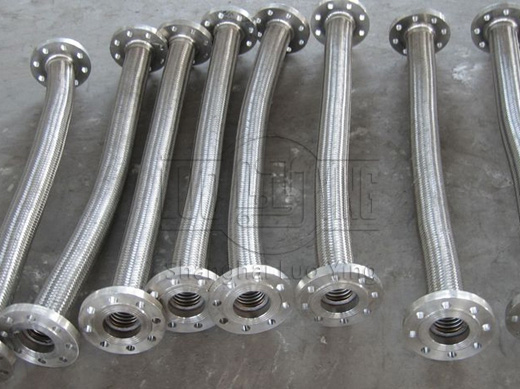Stainless Steel Metal Bellow Compensator Introduction, Classification.
Oct-23-17
Stainless Steel Metal Bellow Compensator Introduction, Classification.Stainless steel metal bellow compensators are essential components used in various industries to absorb thermal expansion and contraction, as well as to compensate for changes in pressure and movement in piping systems. These compensators are made of high-quality stainless steel, known for its excellent corrosion resistance, durability, and long service life. Let's take a closer look at the introduction and classification of stainless steel metal bellow compensators.
Introduction:
Stainless steel metal bellow compensators are designed to provide flexibility and pressure resistance in piping systems, allowing for expansion, contraction, and movement without causing stress or damage. The bellows are the key component of these compensators, as they are responsible for absorbing the movement and accommodating the changes in pressure and temperature.
Stainless steel is the preferred material for manufacturing these compensators due to its exceptional resistance to corrosion, high and low-temperature performance, and reliability. The stainless steel bellows are typically constructed using a series of convolutions, formed by expanding and collapsing the material. This construction enables the bellows to expand and contract axially, accommodate lateral movement, and absorb angular deflection.

Stainless steel metal bellow compensators can be classified based on various factors, including their design, operating conditions, and application requirements. Here are a few common classifications:
Axial Expansion Compensators: This type of compensator is designed to absorb axial movements or expansion and contraction along the pipe axis. It consists of one or more bellows and is typically used in applications where the primary movement occurs in a linear direction.
Universal Expansion Compensators: Universal compensators are designed to accommodate multi-directional movement, including axial, lateral, and angular movements. They are suitable for applications where the pipes are subjected to complex movements or where the direction of movement is unpredictable.
Gimbal Expansion Compensators: Gimbal compensators are designed to absorb angular deflection of the piping system. They consist of two bellows connected by a gimbal ring, allowing rotational movement in multiple planes. These compensators are commonly used in applications where pipes are subjected to angular movements due to thermal expansion or external forces.
Pressure Balanced Expansion Compensators: Pressure balanced compensators are designed to compensate for pressure fluctuations in addition to thermal expansion. They feature an additional balancing chamber that counteracts the pressure forces and minimizes the load on the bellows. These compensators are suitable for applications where pressure variations are significant.
Hinged Expansion Compensators: Hinged compensators incorporate a hinge mechanism that allows angular movement in a single plane. They are commonly used in applications where only one direction of angular deflection is expected.
Rectangular Expansion Compensators: While most compensators are cylindrical in shape, rectangular compensators are designed specifically for applications that require a rectangular or square cross-section. They provide flexibility and movement accommodation in a similar manner to cylindrical compensators.
In conclusion, stainless steel metal bellow compensators play a crucial role in absorbing thermal expansion, contraction, and movement in piping systems. They are widely used in various industries due to their corrosion resistance, durability, and reliability. Understanding the different classifications of these compensators, such as axial, universal, gimbal, pressure balanced, hinged, and rectangular, can help in selecting the most suitable compensator for specific application requirements.

